A bird’s nest can symbolize many different things, but most common interpretations are based around security and safety. Probably that is why the shape of the nest inspires architect to create extraordinary building designs that look like a giant’s bird nest and are intended to feel like Home.
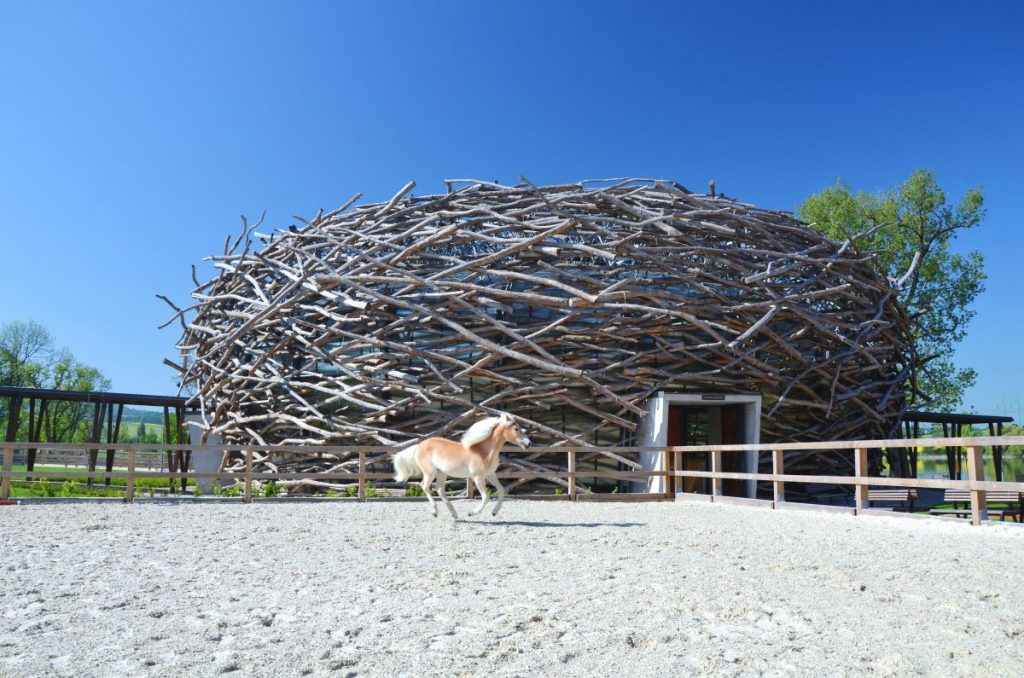
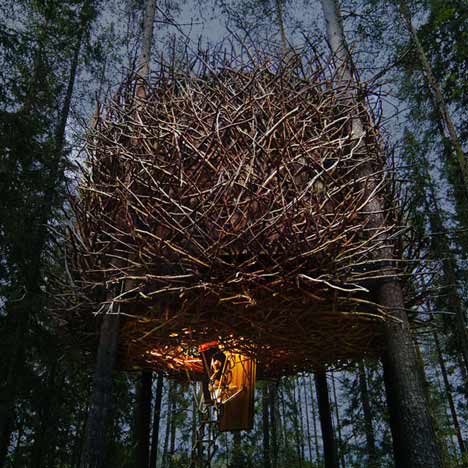
The Bird’s Nest by Inredningsgruppen
The first “nest” on our list has been designed by Swedish studio Inredningsgruppen back in 2010 as one of the unique rooms at the Treehotel in northern Sweden. Aptly named the Bird’s Nest, the circular structure is supported by existing trees, entirely covered in twigs and can be accessed via a retractable staircase.
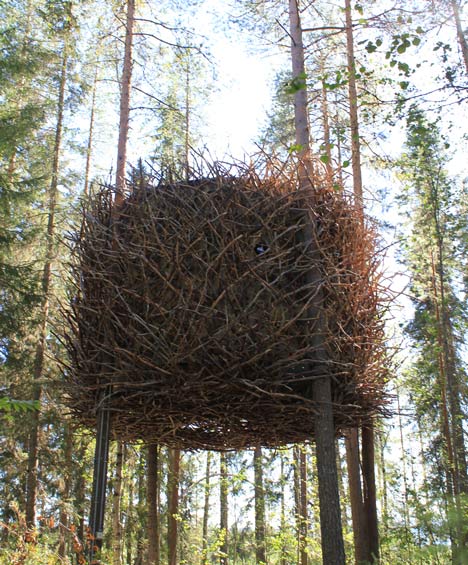
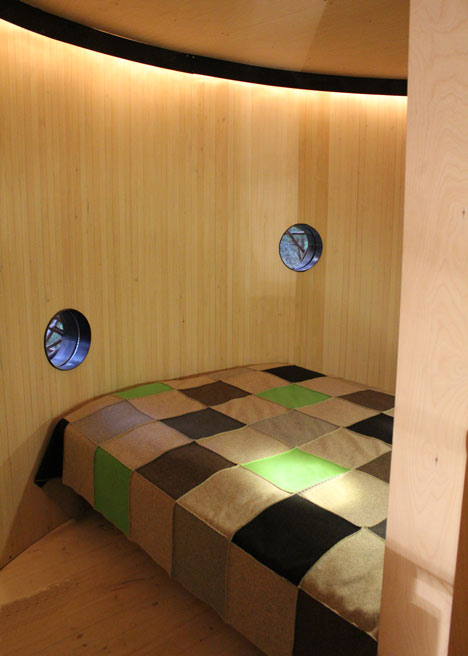
The Bird’s Nest by Inredningsgruppen
With discreet small round windows almost hidden by the network of branches, from the outside the building appears as a big nest, only the scale separating it from other nests in the vicinity.
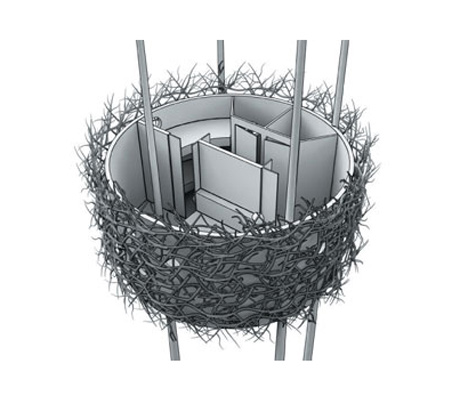
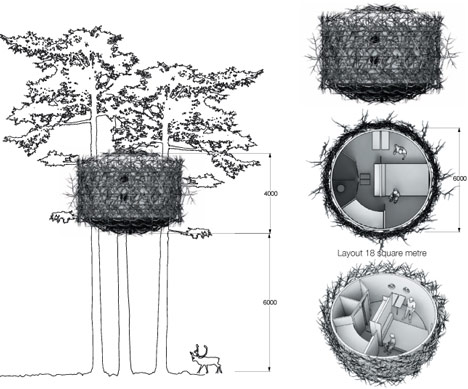
The Bird’s Nest by Inredningsgruppen
On the inside, however, contrasting the eye-catching exterior, there is a high standard room with modern design, its walls covered with wooden panels throughout.
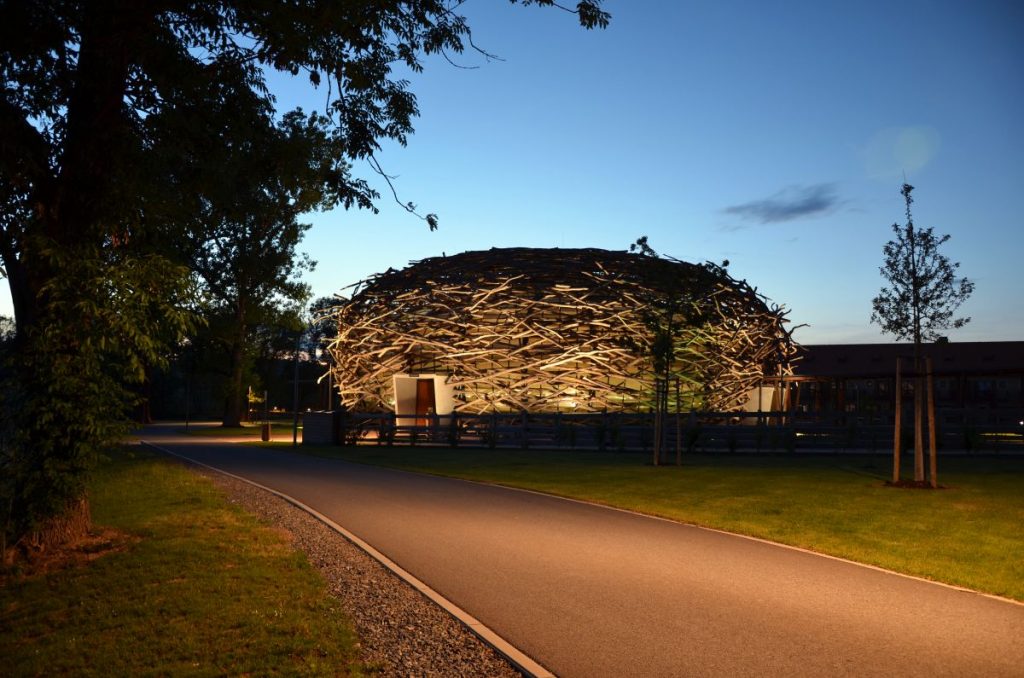
Stork Nest Farm by SGL Projekt
The stick-covered dome on the site of a former farmstead and distillery in the Czech Republic is actually a horse-riding arena developed by Prague-based studio SGL Projekt.
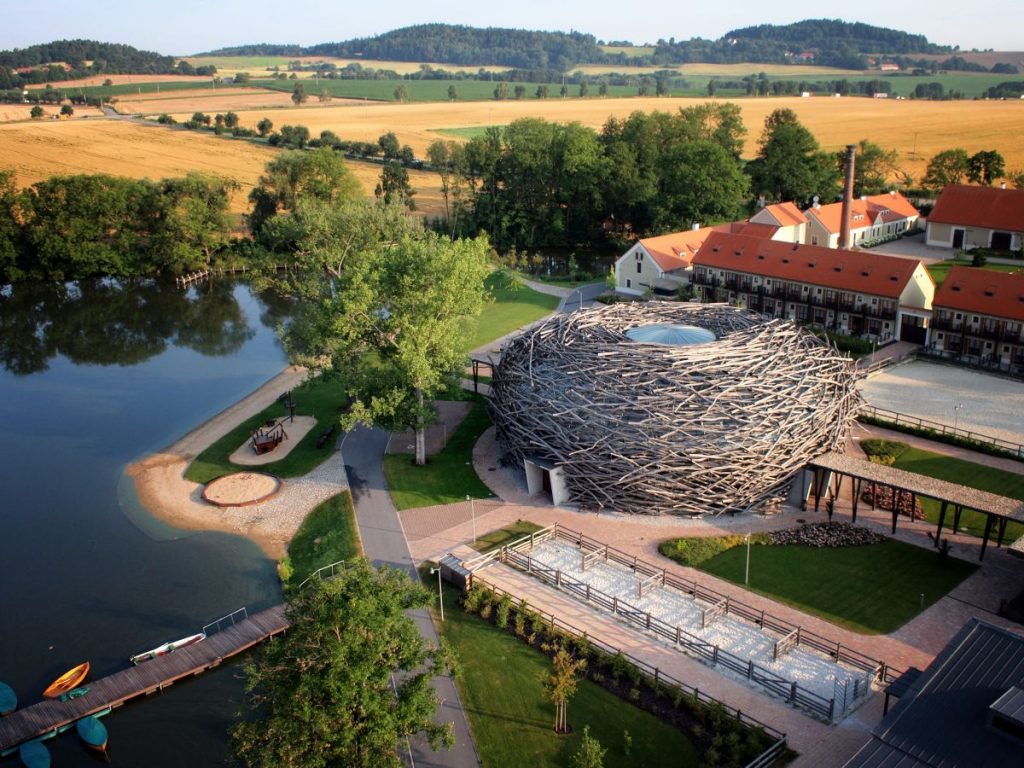
Stork Nest Farm by SGL Projekt
Titled the Stork Nest Farm after storks that resided in the roof of the distillery long after it fell into disuse, the project accommodates hotel, conference and leisure facilities.
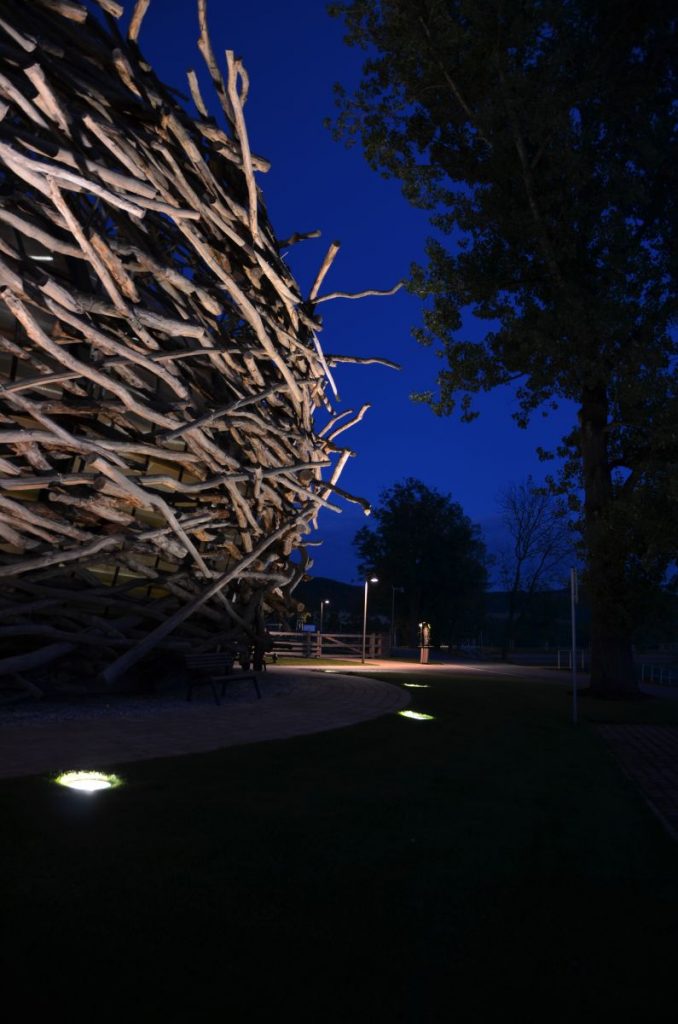
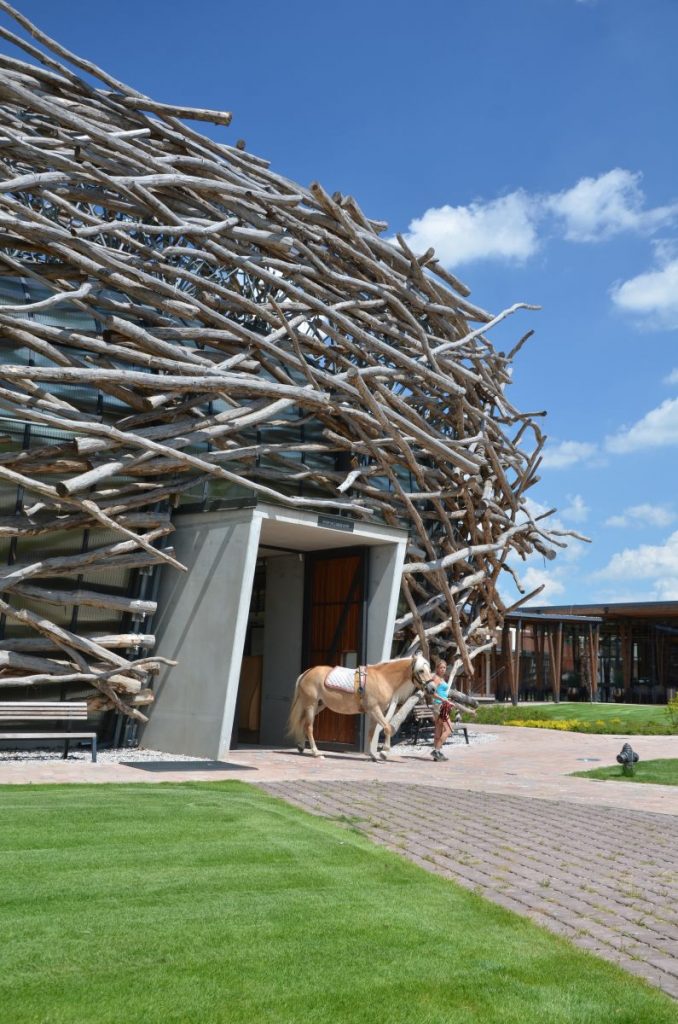
Stork Nest Farm by SGL Projekt
An eight-metre-wide skylight at the roof’s peak lets natural daylight down into the centre of the timber-framed building, while concrete-framed entrances lead visitors inside.
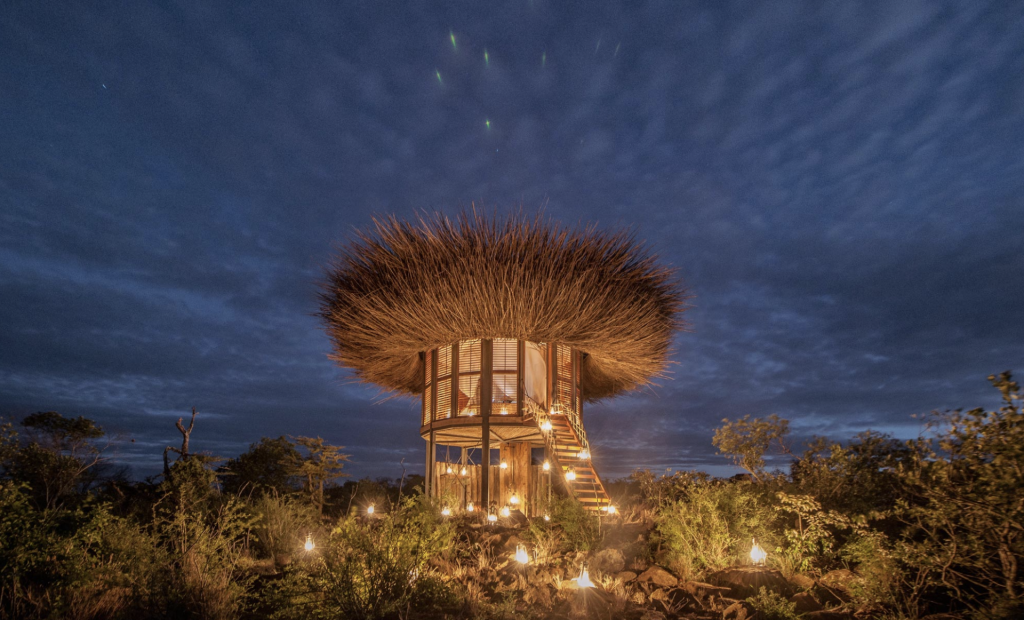
Nay Palad Bird Nest
Set in the heart of the Laikipia plains, one of Kenya’s most spectacular safari locations, Nay Palad Bird Nest is an accommodation on the grounds of Segera Retreat, which has been created as a result of a collaboration with conservationist Jochen Zeitz, the founder of Segera Retreat, and architect Daniel Pouzet.
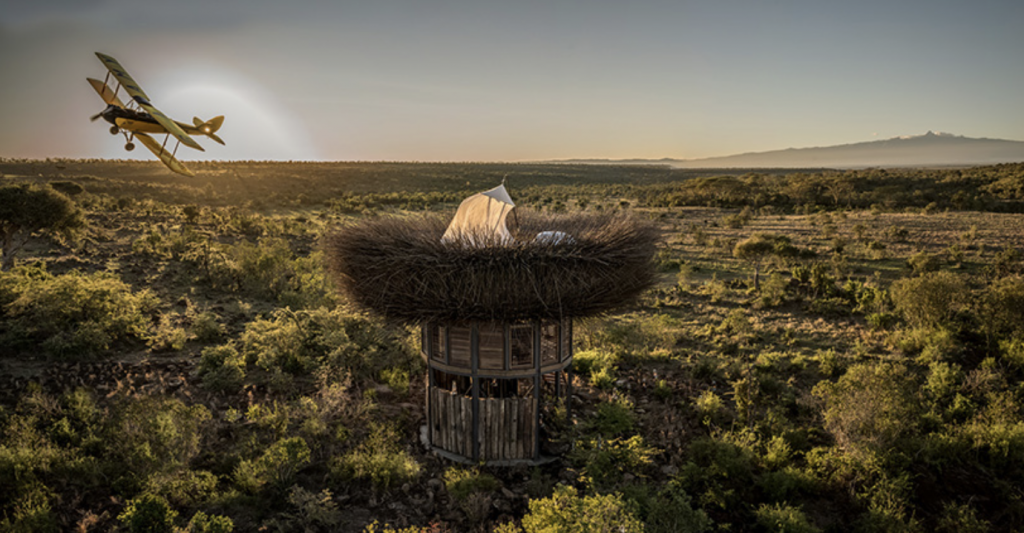
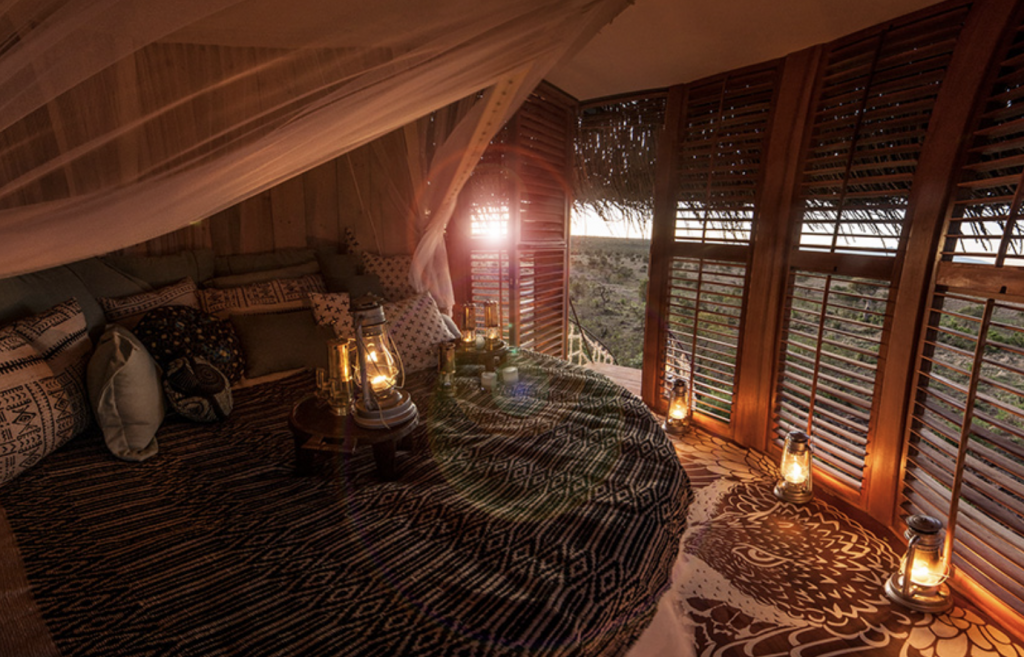
Nay Palad Bird Nest
Perched amid the treetops on a river teeming with wildlife, the Bird Nest offers views of the plains by day that are matched only by those of the stars at night. In the morning, guests awaken to the magical sounds of animals at play.
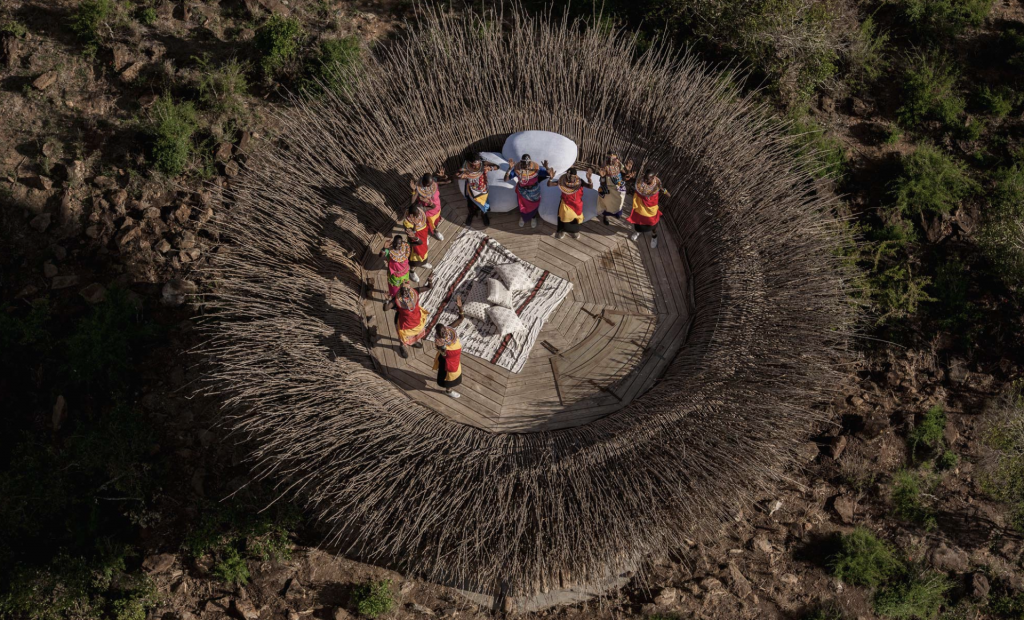
Nay Palad Bird Nest
The entire nest has been constructed using raw materials, such as farmed wood and tree branches that have been woven together by local community members. The space is designed to accommodate to sleep two guests, but could also host a family with children or more adventurous guests able to sleep out on the top deck.